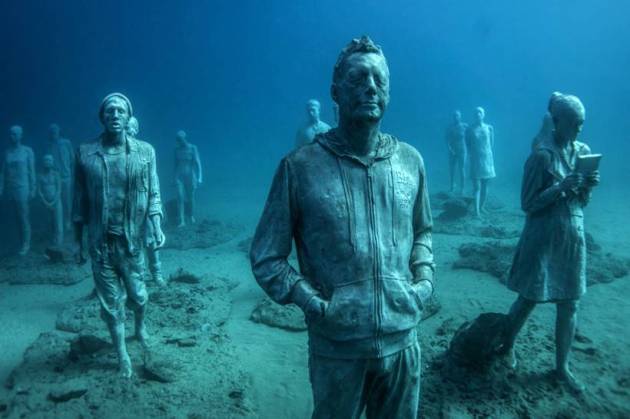Museo Atlantico: Europe’s first underwater contemporary art museum
Museo Atlantico is Europe’s first underwater contemporary art museum, which is situated in off the coast of Lanzarote in Canary Island, Spain.
 1 / 10
1 / 10Museo Atlantico is Europe’s first underwater contemporary art museum, which is situated just off the coast of Lanzarote, Canary Island, Spain. The first phase of this unique museum was deployed by internationally acclaimed sculptor Jason deCaires Taylor in February 2016. (Source: Underwatersculpture.com)
You have exhausted your
monthly limit of free stories.Read more stories for free
with an Express account.Already have an account? Sign InThis story requires a subscriptionSelect a plan and use DIWALI10 code to get 10% extra offAlready a subscriber? Sign inThis story requires a subscriptionSelect a plan and use DIWALI10 code to get 10% extra offThis content is exclusive for our subscribers.Subscribe now to get unlimited access to The Indian Express exclusive and premium stories.Already a subscriber? Sign In- 2 / 10
British artist Taylor is an internationally acclaimed sculptor who creates underwater living installations, offering viewers mysterious, ephemeral encounters and fleeting glimmers of another world where art develops from the effects of nature on the efforts of man. (Source: Underwatersculpture.com)
- 3 / 10
Museo Atlantico is a unique museum featuring a series of sculptural installations 12m beneath the ocean’s surface. (Source: Underwatersculpture.com)
- 4 / 10
It is accessible to snorkellers, divers and observers through glass bottom boats, and is due to be completed by December 2016. A total of 10 galleries are expected to be ready by year-end. (Source: Underwatersculpture.com)
- 5 / 10
The project is designed in a conversational manner so as to create a large-scale artificial reef that the local fish species and marine biomass can go on to habitate and feed off of. (Source: Underwatersculpture.com)
- 6 / 10
The concrete figures represent the desperate refugees, selfie-taking tourists and a hybrid of flora and humans that will be transformed over time and indoctrinated into the Lanzarote underwater 'society' as do people above on land. (Source: Underwatersculpture.com)
- 7 / 10
This is the first of its kind in Europe and the Atlantic Ocean, and is expected to stand the test of time to last hundreds of years. But interestingly, as the local marine life adopts the artificial reef as their own, the characteristics of the sculptures themselves will change. (Source: Underwatersculpture.com)
- 8 / 10
Of the current lot that has already been placed at the bottom of the ocean, the piece called The Raft of Lampedusa — a sculpted boat carrying 13 refugees — is the most striking. According to The Guardian, the artwork is a modern take on Géricault’s 1818 painting The Raft of the Medusa. (Source: Underwatersculpture.com)
- 9 / 10
According to the sculptor's website, "by situating his sculptures in clear, shallow, barren areas, Taylor not only replicates the conditions necessary to stimulate coral growth but ensures divers, snorkellers and those aboard glass bottom boats the opportunity to view his works." (Source: Underwatersculpture.com)
- 10 / 10
The first phase of the underwater museum is expected to be open to the public at the end of February; the new galleries will be added all through the year. (Source: Underwatersculpture.com)